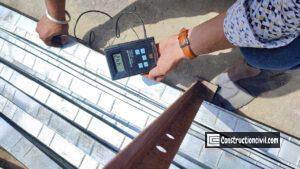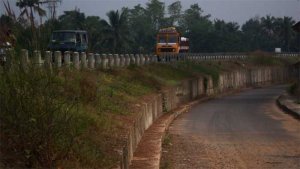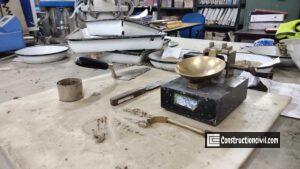What is Plate Load Test for Soil?
Plate load test for soil is conducted to evaluate foundation soil’s safe bearing capacity and settlement, basically for clayey and sandy soils. This method believes that clown to the depth of influence of stresses, the subsoil strata is relatively uniform and should be confirmed by boring. So, the plate load test of soil is helpful for the selection and design of the foundation.
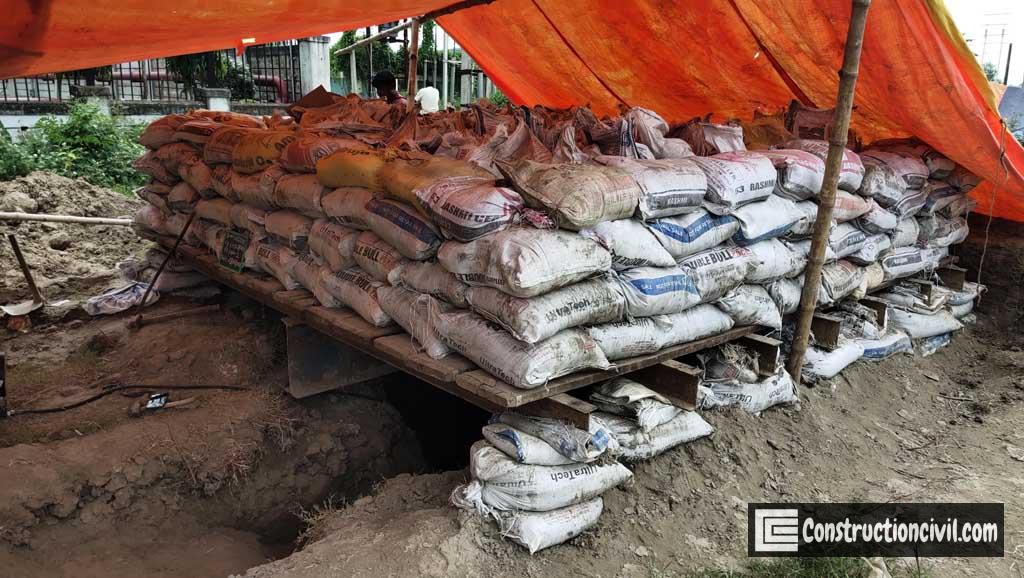
Also, Read: SPT Test for Soil Procedure, Refusal Conditions & Correction
Significance of Plate load Test for Soil:
- To determine the allowable bearing capacity of open-foundation for uniform foundation soil or rock deposits.
- It is suitable for gravel or boulder strata when SPT and DCPT do not give precise results.
- It is used to determine the modulus of subgrade reaction (K) required for raft foundation and Rigid Pavement.
Plate Load Test Apparatus:
The plate load test apparatus includes MS bearing plates, loading equipment, and instruments to record the applied loads and resulting settlement.
Bearing plates:
The plate load test apparatus includes a mild steel plate to transfer the load into the soil, known as a bearing plate. Circular or square MS bearing plates of not less than 25 mm in thickness and 750mm diameter with a few other smaller diameters (usually 600, 450 and 300mm) plates as stiffeners of the same thickness is used for the test.
Loading equipment:
The loading arrangement of plate load test for soil can be a reaction truss with hydraulic jack or kentledge. The reaction frame may suitably be loaded to give the required reaction load on the test plate. The applied load may be recorded either by proving ring dial gauge assembly or a pressure gauge connected to the output of the hydraulic jack.
Settlement Recording:
It can be done using three or four dial gauges(0.01 – 25.00 mm) set on the periphery of the bearing plate from an independent datum bar. The datum bar used should be supported far from the influence area.
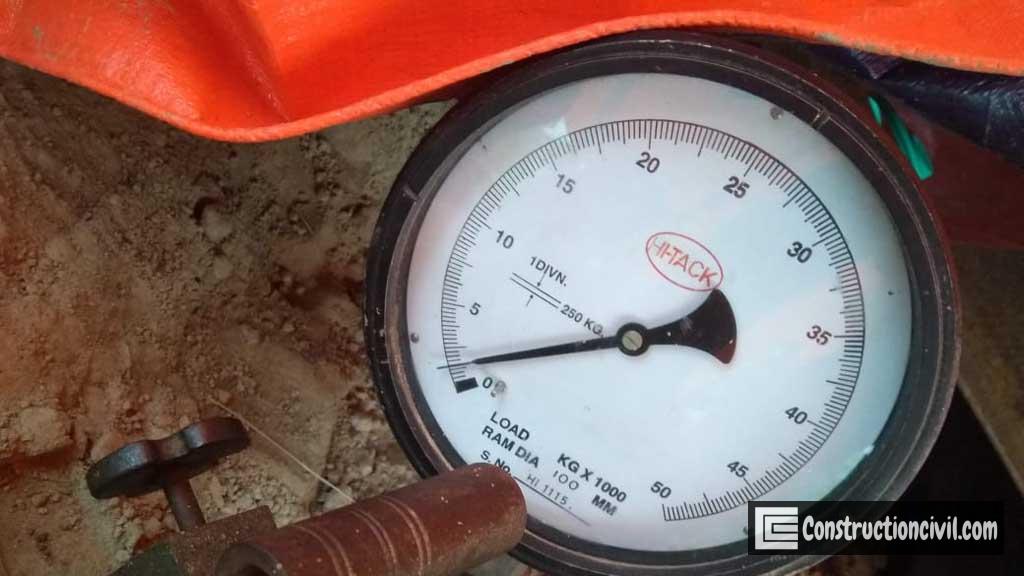
Also, Read: Vertical Pile Load Test Procedure – Kentledge Method
Plate Load Test for Soil Procedure:
Bearing Plate Selection:
- For circular footings and road pavement, circular bearing plates are used in the plate load test for soil.
- Standard penetration resistance value < 15; a 450mm square plate or concrete blocks can be used.
- 15 < standard penetration resistance value < 30, three plates of sizes 300mm – 750mm shall be used depending on the foundation soil’s reaction loading and maximum grain size.
- The side of the test plate shall be at least four times the maximum particle size present at the foundation level.
Preparation of Test Pit:
- Plate load test for soil required excavation up to the proposed Foundation Level.
- The test location is prepared after removing all the loose material properly; so that the 750mm diameter test plate rests horizontally in complete contact with the foundation soil.
- The width of the excavated pit should be five times the Plate Width.
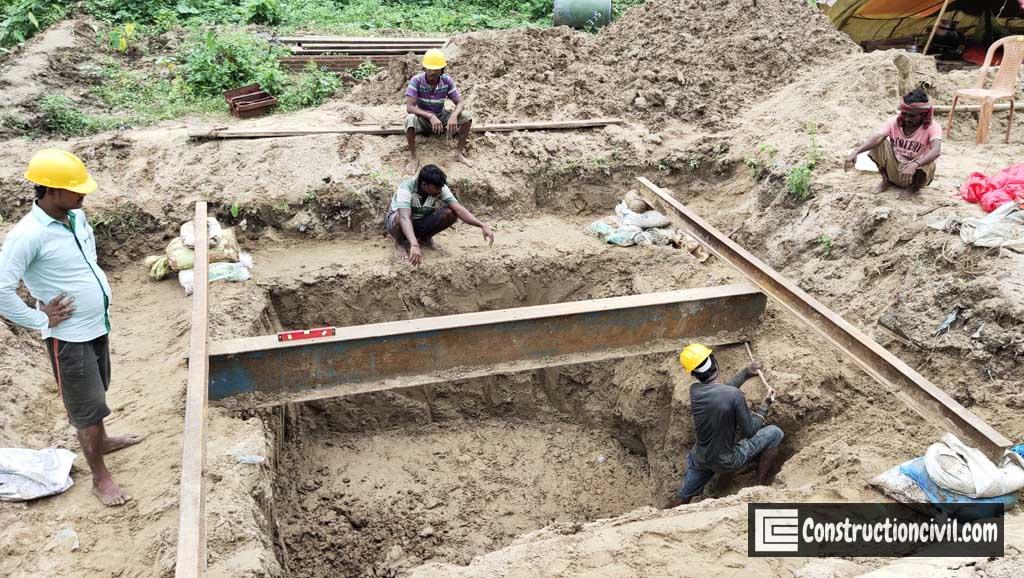
Also, Read: Lateral Load Test Pile – General Arrangement & Procedure
Plate Load Test Procedure:
- Here we will discuss the test procedure considering design SBC 10 ton/m2 and plate size (0.600×0.600), So the test load, which is 2.5 times of design SBC is equal to 25 ton/m2.
- First of all, in the case of plate load test for soil, apply a seating load equivalent to a pressure of 0.07 kg/cm2 (320 kg for 75 cm diameter plate) is used and released after a few seconds, dial gauge is set to zero.
- Each stage loading should be 20% of the “Safe Load” i.e. (0.20 ×10) ton/m2 i.e. 2 ton/m2.
- If a 0.600 × 0.600m square plate is used, the maximum load for each stage will be (2×0.600×0.600), i.e. 0.720 ton, i.e. 720Kg.
- The maximum loading corresponding to the “Test Load” will be 9 tons, i.e. 9000 Kg, So a total of 13 stages of loading will be applied to reach the “Test Load” corresponding to the 2.5 tines of SBC of 10 ton/m2.
- For each increment, the settlement is recorded at a different time interval of 1.0, 2.25, 4.0, 6.25, 9.0, 16.0, 25.0 min, 1.0hr, 2.0hr, until the rate of settlement is not more than 0.02 mm/min, not less than 1hr for Sandy / Gravelly Soils.
- In clayey soil, the settlement measures are taken either for the time exceeding 70 – 80% of estimated Ultimate Settlement or for 24 hours for each load increment.
- Application of the next higher load and the same way the process is repeated.
- After achieving “Test Load”, maintain the load 24 hrs and record vertical settlement every 1 hour under sustained loading conditions.
- Then gradual unloading similar to loading stages and recording for minimum, say 15 minutes at every stage of unloading, should be done.
- Various Stages of loading and the corresponding duration of taking the readings of vertical deflection corresponding to the applied loading should be as per the stipulations of IS1888 guidelines.
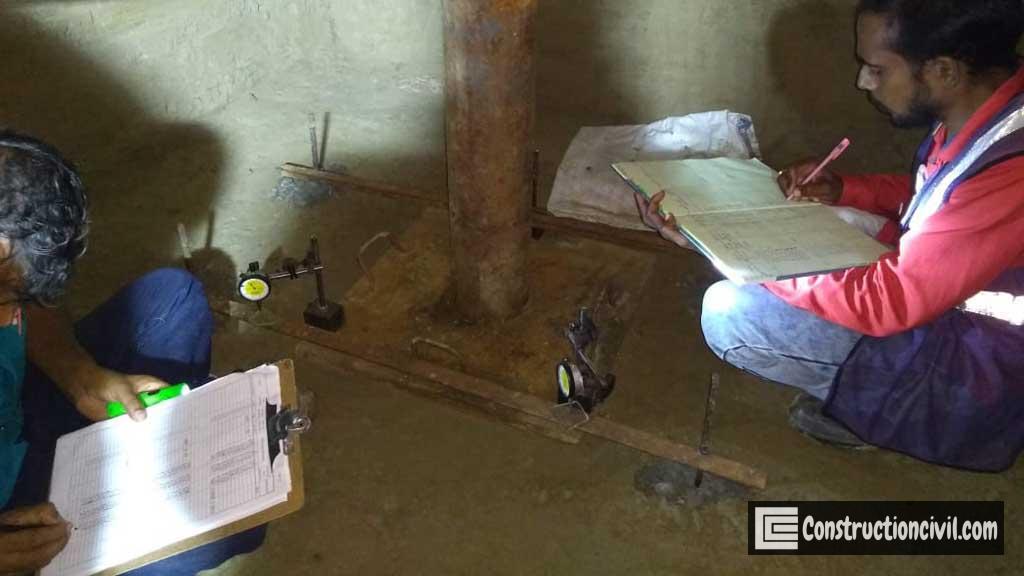
Also, Read: Integrity Test of Pile – Purposes, Procedure & Limitations
- Plate load test for soil continues until a total settlement of 25.00 mm under normal conditions, or 50.00 mm (under particular conditions like dense gravel, gravel-sand mixture) is reached or till failure occurs, whichever is earlier.
- When settlement does not reach 25.00 mm, the test shall be continued under the following condition:
- At least two times the Estimated Design Safe Bearing Pressure or until the settlement increases rapidly at a specific load indicating shear failure, whichever is earlier.
- The total settlement is more than 10% of the width or diameter of the plate.
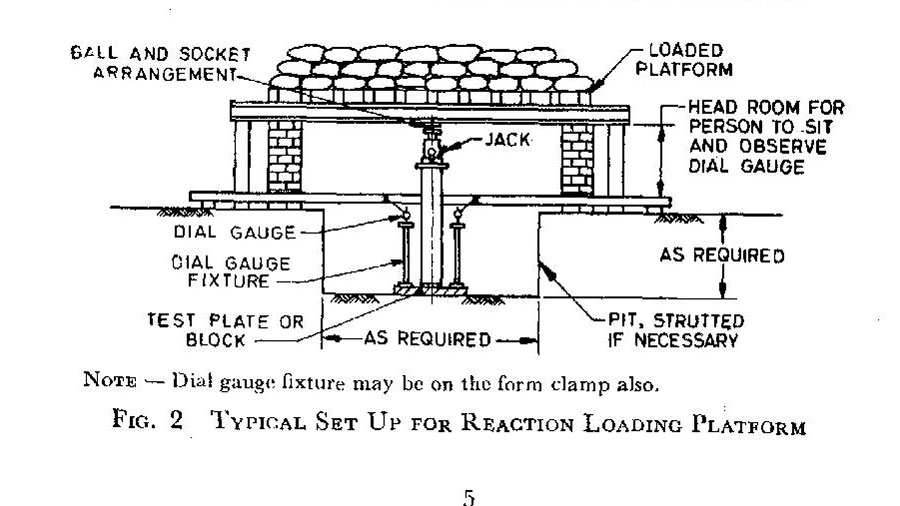
Also, Read: Geotechnical Investigation Objectives and Guidelines
Plate Load Test For Soil Case Study and Foundation Size:
A Plate Load Test for soil(Routine Type) was conducted using a 600mm square plate in a particular site. Load vs settlement plots are made in arithmetic scale to calculate Allowable Bearing Capacity and Young’s modulus. The calculations are presented below.
Test Data:
- Maximum recorded plate settlement is 12.27mm under a load intensity of 35.0t/sqm.
- The allowable settlement as per IS:1904 is 50.00mm
- As the settlement observed is less than allowable settlement, the founding stratum is safe for design bearing capacity.
- Recommended safe load =20 t/sqm. Corresponding settlement =4.16mm
Young’s Modulus:
The Young’s Modulus of the subsoils can be obtained from the load settlement curves, which can be used to derive the subgrade modulus and immediate settlement. This immediate settlement will again determine the allowable bearing capacity of the foundation soil.
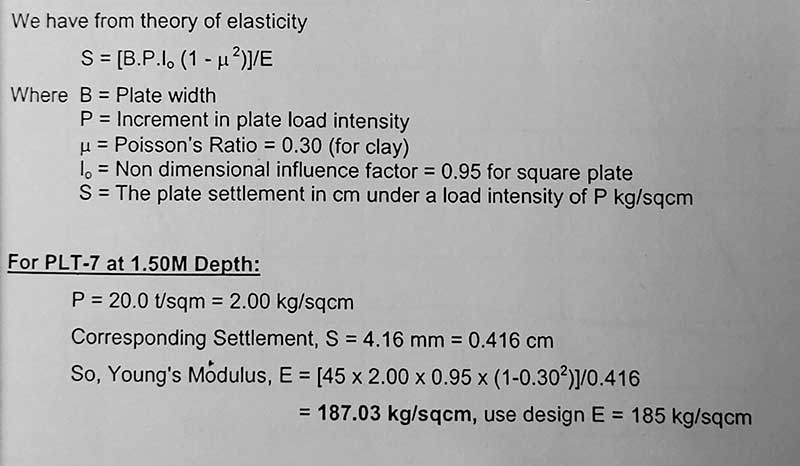
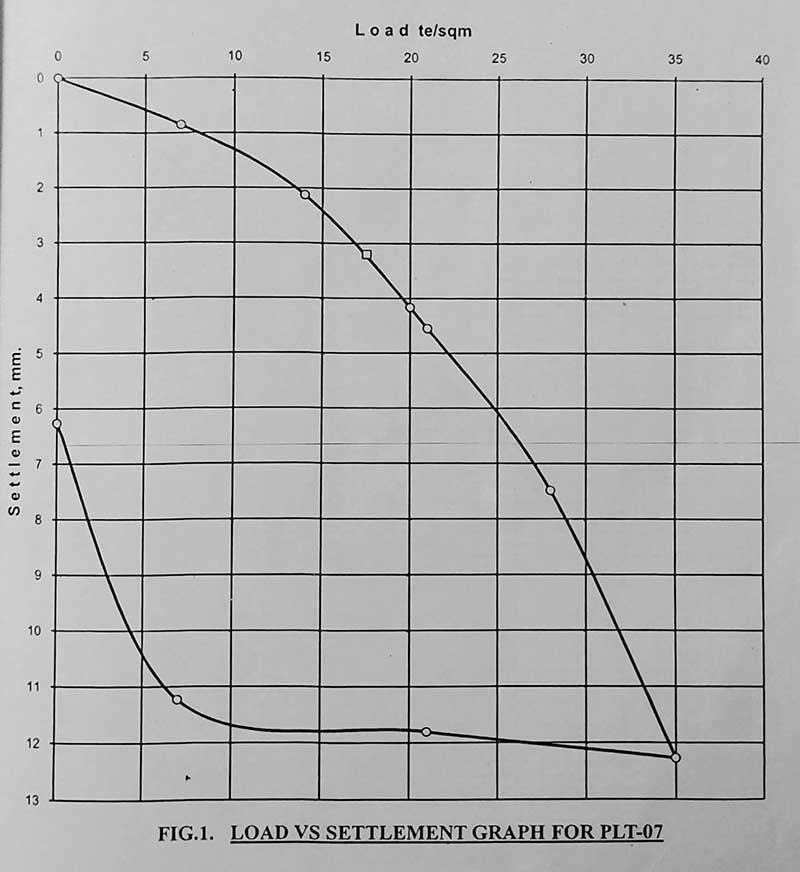

Also, Read: Laboratory Test on soil – Procedures and Objective
Subgrade Modulus:
Subgrade Modulus is obtained from plate load tests for soil as K = P/S, Where P is Plate Load corresponding to settlement and S is the corrected subgrade modulus for the plate, presented below.
| Test No. | Location | Subgrade Modulus for plate as per IS: 9214, Kg/cm2 | Corrected Subgrade Modulus at per IS: 9214, Kg/cm2 |
| PLT-07 | Project location | 4.25 | 4.43 |
The Subgrade modulus value is inversely proportional to the square root of the foundation area up to a base area of 10.0sqm and then remains constant. The Subgrade Modulus values for PLT-07 have been considered for calculations for other foundation sizes. The subgrade modulus for different foundation areas is presented below based on the above test result.

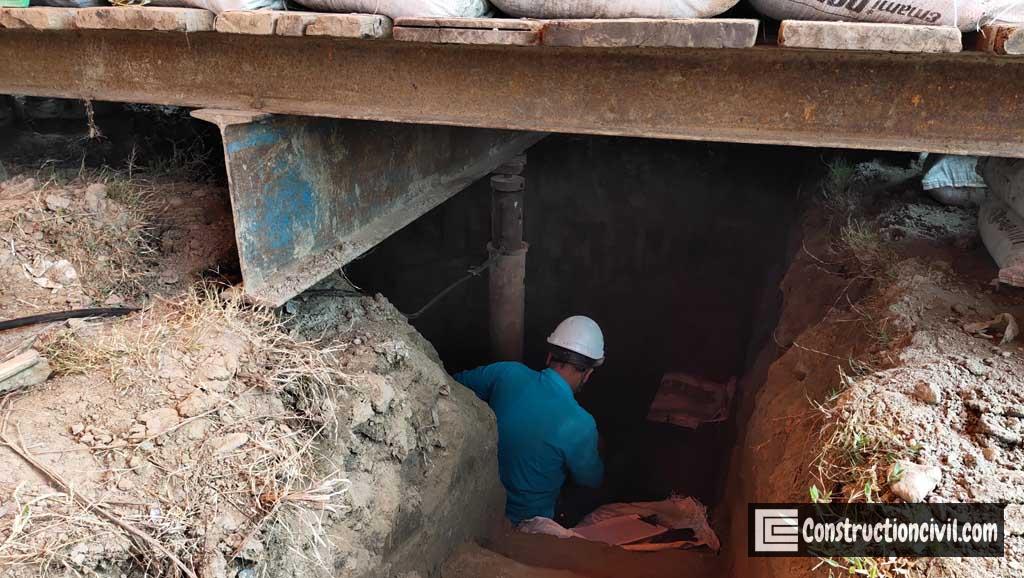
Also, Read: Dynamic Load Test on Piles – Objective, Procedure & Analysis
Limitation of Plate Load Test for Soil:
- Test results reflect only the character of soil located within the depth twice the width of the test plate and not corresponding to the actual foundation width, which is larger than the test plate Width.
- Plate load test for soil does not give the ultimate settlement for cohesive foundation soil.
- Misleading test results in the case of the character of foundation soil changes within the shallow depth, which is not uncommon.
- A Satisfactory load test should also include adequate exploratory boreholes with due attention being paid to any weaker stratum.
- From shear consideration, the bearing capacity of clayey soil without any Angle of Internal Friction (phi) is almost the same as for a smaller Test Plate.
- Since the bearing capacity of sandy soil increases with the size of the foundation, the bearing capacity is conservative as derived with the smaller test plate. It may be necessary to test with plates of at least three different sizes and the bearing capacity results extrapolated with actual foundation size.



